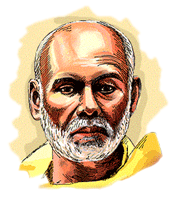0Vellappally Natesan was elected general secretary of the Sree Narayana Dharma Paripalana (SNDP) Yogam for the fourth consecutive term with a thumping majority of 6,708 votes over his nearest rival, Gokulam Gopalan, chairman of the Sree Narayana Dharma Vedi.
The other three candidates in Mr. Natesan's panel were also declared elected with huge margins. The results of the elections were announced at 10 p.m.
M.N. Soman was re-elected president of the Yogam with a majority of 6,737 votes over his nearest rival, G. Mohandas of the Vedi panel. While Dr. Soman polled 7,556 votes, Prof. Mohandas polled 819 votes. The other candidates for the post together polled 112 votes.
Mr. Natesan's son, Thushar Vellappally, who contested the vice-president's post won with a majority of 6,269 votes over his nearest rival, Biju Ramesh of the Vedi panel. While Mr. Thushar poled 7,289 votes, Dr. Ramesh polled 1,020 votes. Two other candidates together polled 171 votes.
Arayakandi Santosh of the Vellappally panel was elected Devaswom secretary of the Yogam by a majority of 6,655 votes over his nearest rival, K.S. Gopakumar of the Vedi panel.
After the announcement of his victory, Mr. Natesan said the results had demolished Mr. Gopalan's allegation that the voters' list was manipulated. The allegation was that only Vellappally supporters were enrolled in the list. However, the results showed that the candidates in the rival panel had polled in the vicinity of 800 to over 1,000 votes.
Earlier protests by Mr. Gopalan and his supporters alleging rigging led to tension. The protesters were arrested following a demonstration and taken to the Chathannur police station, 30 km from the city. Released soon after, Mr. Gopalan went on a fast in front of the station. Others, nearly 200 members of the vedi, blocked National Highway 47 passing through Chathannur.
(The Hindu) View more
Continue Reading
The other three candidates in Mr. Natesan's panel were also declared elected with huge margins. The results of the elections were announced at 10 p.m.
M.N. Soman was re-elected president of the Yogam with a majority of 6,737 votes over his nearest rival, G. Mohandas of the Vedi panel. While Dr. Soman polled 7,556 votes, Prof. Mohandas polled 819 votes. The other candidates for the post together polled 112 votes.
Mr. Natesan's son, Thushar Vellappally, who contested the vice-president's post won with a majority of 6,269 votes over his nearest rival, Biju Ramesh of the Vedi panel. While Mr. Thushar poled 7,289 votes, Dr. Ramesh polled 1,020 votes. Two other candidates together polled 171 votes.
Arayakandi Santosh of the Vellappally panel was elected Devaswom secretary of the Yogam by a majority of 6,655 votes over his nearest rival, K.S. Gopakumar of the Vedi panel.
After the announcement of his victory, Mr. Natesan said the results had demolished Mr. Gopalan's allegation that the voters' list was manipulated. The allegation was that only Vellappally supporters were enrolled in the list. However, the results showed that the candidates in the rival panel had polled in the vicinity of 800 to over 1,000 votes.
Earlier protests by Mr. Gopalan and his supporters alleging rigging led to tension. The protesters were arrested following a demonstration and taken to the Chathannur police station, 30 km from the city. Released soon after, Mr. Gopalan went on a fast in front of the station. Others, nearly 200 members of the vedi, blocked National Highway 47 passing through Chathannur.
(The Hindu) View more


.jpg)







